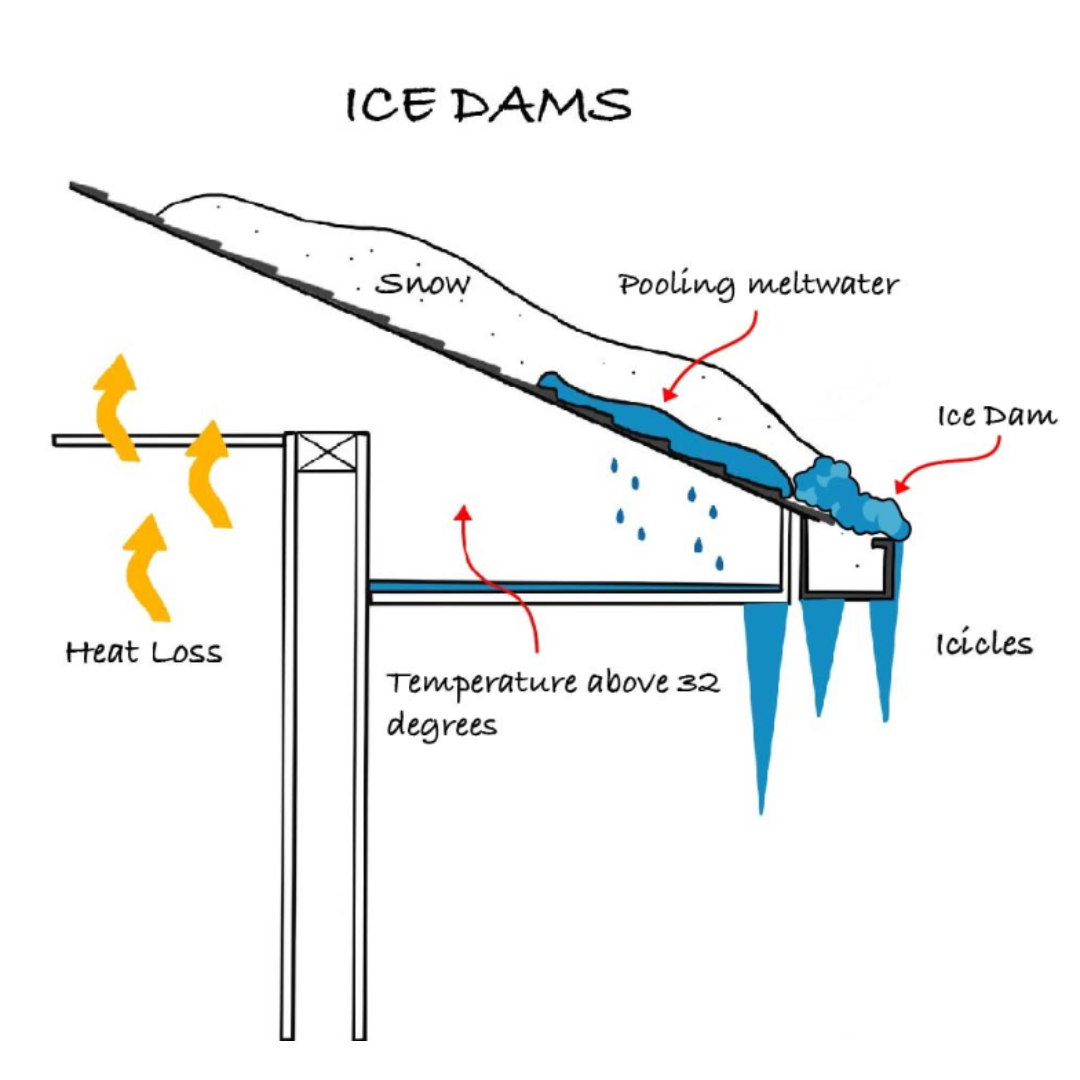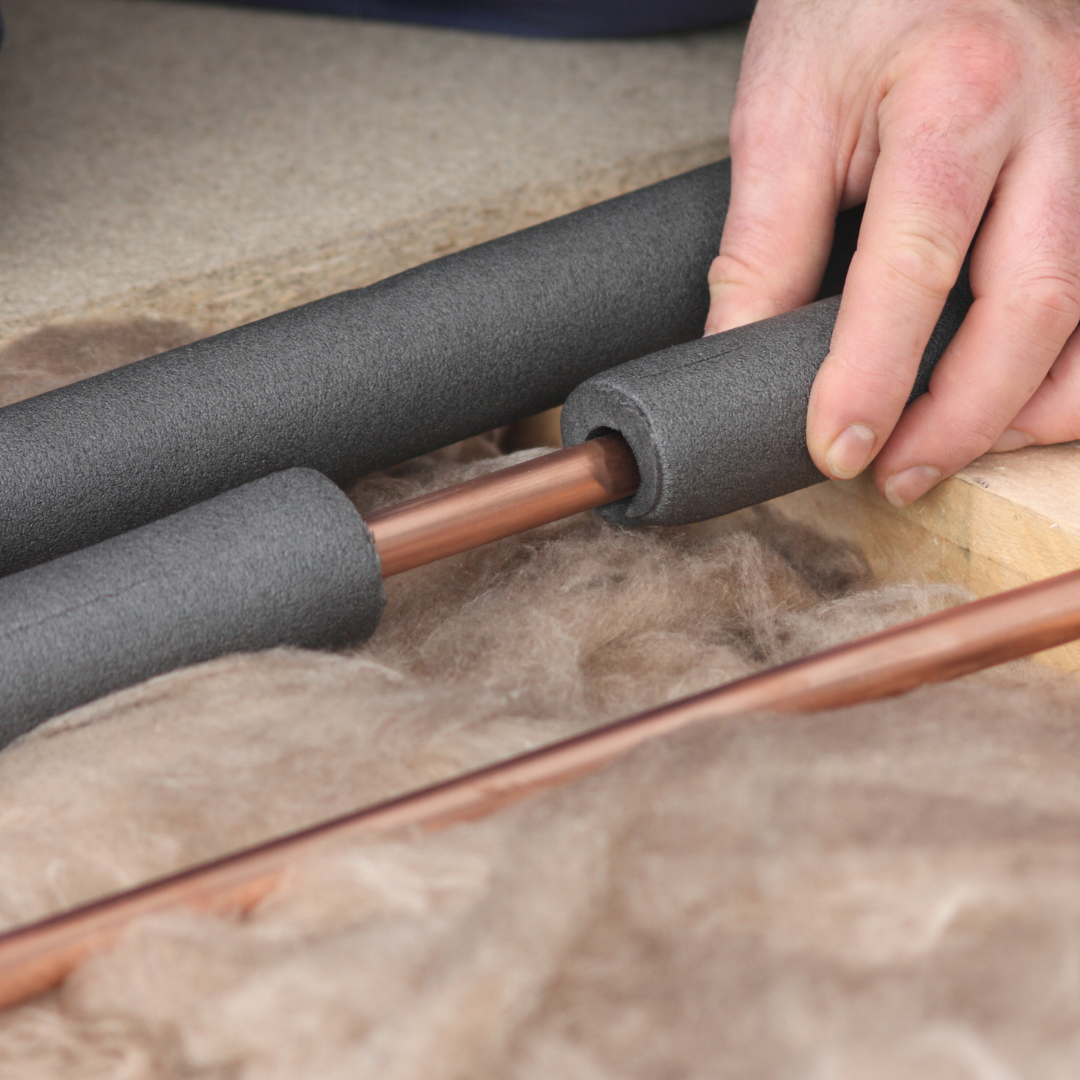
Professional Real Estate Experience
Brant County, Brantford,
Haldimand, Norfolk, Oxford
& Surrounding Area
Each month, we publish a series of articles of interest to homeowners -- money-saving tips, household safety checklists, home improvement advice, real estate insider secrets, etc. Whether you currently are in the market for a new home, or not, we hope that this information is of value to you. Please feel free to pass these articles on to your family and friends.
In This Issue:
-
Why Homes Sit On The Market And How To Keep Yours Moving — Diagnose the real reasons listings stall and relaunch with smart fixes in pricing, presentation, timing, and marketing.
-
Understanding the Real Estate Transaction From Start to Finish — A clear, step-by-step walkthrough from offer to closing so you know what to expect and how to stay on track.
-
Essential Tips For Buying In a Competitive Market — Act fast, structure stronger offers, and compete smartly without overpaying—even in bidding wars.
Why Homes Sit On The Market And How To Keep Yours Moving
Summary
A home that sits too long on the market becomes harder to sell—but most delays can be traced back to a few fixable issues. This report reveals the top reasons homes don’t sell quickly and outlines the proven tactics to get buyers through the door. From pricing and presentation to timing and marketing, learn how to diagnose the problem and relaunch with success
It’s a seller’s worst fear: you list your home, expecting offers—and then nothing. No showings, no offers, and no clue what went wrong. The longer your listing lingers, the harder it becomes to attract buyers. But don’t panic. Most stalled sales can be turned around with the right strategy. Here’s how to find out what’s holding you back—and how to fix it.


Top Reasons Homes Sit on the Market
-
Overpricing
This is the #1 reason homes don’t sell. If buyers think your home is overpriced—even slightly—they won’t bother to tour it. Online search filters and price comparisons make overpricing easy to spot. Fix: Reevaluate your price based on comps, showing feedback, and agent advice. -
Poor Listing Photos
Your online listing is your first impression—and bad photos can kill buyer interest instantly. Dim lighting, cluttered rooms, or vertical phone photos won’t cut it. Fix: Hire a professional photographer and consider a 3D tour or video walkthrough. -
Lack of Curb Appeal
Buyers form opinions before they step inside. If the lawn is overgrown, the paint is chipped, or the entryway feels neglected, you’ve lost momentum before the showing begins. Fix: Tidy up landscaping, repaint the front door, and power wash the exterior. -
Limited Showing Availability
If buyers can’t get in, they won’t buy. Homes with restricted showing hours or last-minute cancellations deter busy agents and motivated buyers. Fix: Make your home easy to show—consider a lockbox and stay flexible with your schedule. -
Weak or No Marketing
Just listing on the MLS isn’t enough. Without strategic marketing, many buyers won’t even know your home exists. Fix: Work with an agent who uses digital advertising, social media promotion, targeted outreach, and staging to make your home shine. -
Unusual Layout or Condition
Homes with quirky floor plans or outdated features can be harder to sell. Fix: Highlight unique positives, offer design suggestions, or consider minor updates (lighting, paint, flooring) to boost appeal. -
Negative Buyer Feedback Ignored
If multiple buyers or agents provide the same feedback—listen. Whether it’s a pet smell, a dark room, or an awkward space, ignoring buyer concerns can cost you time and money. Fix: Act on consistent feedback quickly to remove objections.
How to Relaunch or Refresh Your Listing
If your home has already been on the market for several weeks or months:
- Take the listing temporarily off-market and relaunch with changes
- Adjust the price to realign with buyer expectations
- Refresh the photos, description, and staging
- Promote the listing as “Back on Market” with a strong marketing push
Work With a Proactive Agent
Your agent should provide regular updates, showing reports, and a plan to address obstacles. If they’re slow to act or dismiss your concerns, it may be time to reevaluate your partnership.
Conclusion:
Homes don’t just sit without reason. With the right diagnosis and a smart refresh, you can reignite buyer interest and get your home sold. Don’t settle for a stagnant listing—make the changes that matter and take control of your sale.
Understanding the Real Estate Transaction From Start to Finish
Summary
Real estate transactions can feel overwhelming—but they don’t have to be. Whether you’re buying or selling, understanding the full process from offer to closing puts you in control. This guide breaks down each stage of the transaction in simple terms so you know what to expect, what’s expected of you, and how to stay on track. Confidence starts with clarity—get it here.
The real estate transaction is more than just signing a few papers—it’s a coordinated series of steps involving multiple people, documents, and deadlines. Understanding how it all works can help you make informed decisions and avoid costly mistakes. Here’s how a typical transaction unfolds from beginning to end.


-
The Pre-Listing or Pre-Buying Phase
Sellers: Choose an agent, prepare the home, gather paperwork, and determine your pricing strategy.
Buyers: Get pre-approved, define your budget, hire an agent, and begin viewing homes. -
Making (or Receiving) an Offer
Buyers: Submit an offer with price, contingencies, and proposed timeline.
Sellers: Accept, reject, or counter the offer.- Key components of the offer:
- Purchase price
- Financing method
- Earnest money deposit
- Contingencies (inspection, appraisal, financing)
- Closing date
-
Offer Accepted – Escrow Begins
Once the offer is accepted and both parties sign, the home goes into escrow (or under contract). This period is when inspections, appraisals, and title work happen. -
Inspections and Negotiations
-
Buyers schedule home inspections and may request repairs or credits based on findings.
Sellers respond to requests, either agreeing, offering alternatives, or standing firm. -
Appraisal
If the buyer is using a mortgage, the lender orders an appraisal to ensure the home’s value supports the loan. If it appraises low, price negotiations may follow.
-
Title Search and Insurance
A title company or attorney checks for liens or legal issues and ensures the property can legally change hands. Title insurance protects both buyer and lender.
-
Final Loan Approval (Buyers Only)
After inspections and appraisal, the lender finalizes loan underwriting. The buyer receives a Closing Disclosure outlining final costs.
-
Final Walkthrough
Usually 24–48 hours before closing, the buyer walks through the home to confirm it’s in agreed-upon condition and repairs (if any) are complete.
-
Closing Day
Both parties sign legal documents:
- Deed transfer
- Mortgage papers (buyer)
- Settlement statement
- Title/escrow closing documents
Funds are transferred, keys are handed over, and the transaction is officially closed.
-
After Closing
-
Sellers: Pay off mortgage, cancel utilities, forward mail
Buyers: Get utilities in their name, update address, move in!
- Real Estate Agent Guides you through the process and negotiates terms
- Lender Provides financing
- Title Company / Lawyer Manages legal documentation and money transfers
- Inspector Evaluates home condition
- Appraiser Assesses property value
Whether you’re buying or selling, real estate doesn’t have to be confusing. By understanding each step in the process, you’ll be able to ask the right questions, meet important deadlines, and reduce your stress along the way. A good agent will help—but knowledge is power. And now, you’ve got it.
Essential Tips For Buying In a Competitive Market
Summary
In today’s fast-paced real estate market, competition is fierce, but with the right strategy, you can still come out ahead. This guide gives you the tools to act quickly, structure strong offers, and stay grounded through bidding wars. From pre-approval to escalation clauses, you’ll learn exactly how to compete smartly and avoid overpaying. Perfect for buyers navigating high-demand neighborhoods or tight inventory.


In a hot housing market, homes can sell within days, or even hours. Bidding wars, multiple offers, and low inventory make it tough for buyers to compete. But with the right strategy and preparation, you can still win. This guide outlines essential tips that will help you navigate a competitive market, craft a winning offer, and land the home you love, without overpaying or getting discouraged.
1. Get Pre-Approved, Not Just Pre-QualifiedIn a fast-moving market, you need to act fast. Sellers won’t wait for financing uncertainty. A mortgage pre-approval shows you’re serious, qualified, and ready to close. It can give you a major edge over buyers who haven’t secured their financing yet. Make sure your pre-approval letter is updated and includes the lender’s contact info for quick verification.
2. Understand the Market Before You ShopKnow what you’re walking into. Research recent sales, price trends, and how quickly homes are selling in your target area. Are homes selling above asking? Are there frequent bidding wars? Your agent can provide local insights that help you form a realistic strategy and avoid overbidding out of panic.
3. Work With a Responsive, Experienced AgentSpeed matters. A strong buyer’s agent will send you listings quickly, book showings fast, and help you write clean, compelling offers on short notice. Choose someone who knows the local market and has a track record of helping clients succeed in competitive environments.
4. Prioritize Your Must-Haves and DealbreakersYou may not get everything on your wish list. Make a clear distinction between “must-haves” and “nice-to-haves.” Being flexible on finishes or non-essentials can open up more opportunities and give you room to compete where it matters most.
5. Be Ready to Tour and Offer QuicklyIn fast markets, homes can receive offers the same day they’re listed. If you see something you love, don’t wait. Block time in your schedule for short-notice showings, and be prepared to make a decision quickly. Have your agent help you evaluate the home and craft an offer that same day, if necessary.
6. Write a Strong, Clean OfferAvoid unnecessary contingencies. The fewer conditions your offer has, the more appealing it is to the seller. Include a high earnest deposit to show you’re committed. If possible, match or exceed the asking price and offer flexible terms (like a rent-back or quick close) if that’s important to the seller.
7. Consider an Escalation Clause (Use With Caution)An escalation clause automatically raises your offer in response to competing bids, up to a maximum amount. It helps you stay competitive without blindly bidding high. But be cautious—this reveals your price ceiling and may invite counteroffers. Use only in collaboration with an experienced agent.
8. Write a Personal Letter to the Seller (Optional)While not always appropriate or effective, a heartfelt letter can sometimes sway a seller, especially if they have emotional ties to the home. Share what you love about the property and how you envision your future there. Keep it brief, respectful, and positive.
9. Stay Calm in Bidding WarsIf a home attracts multiple offers, emotions can run high. Decide your top price ahead of time and stick to it. Don’t escalate beyond your budget just to “win.” There will always be another opportunity, and smart buyers know when to walk away.
10. Be Mentally Ready for RejectionIn tight markets, you may lose out on one or more homes before you succeed. Don’t let frustration cloud your judgment or push you to overpay. Stay committed to your goals, adjust your strategy if needed, and trust the process. Many buyers eventually land an even better home than the one they lost.
11. Expand Your Search CriteriaIf you’re consistently outbid, consider widening your search radius or rethinking some of your must-haves. Sometimes moving just 5–10 miles outside your preferred neighborhood can reveal more affordable options with less competition.
12. Get Your Financials in OrderMake sure your funds for the down payment and closing costs are easily accessible. Avoid major financial changes, like switching jobs or taking on new debt, during the homebuying process. Your lender will re-check your financials before closing and keep things stable.
Buying in a competitive market isn’t easy, but it is doable with the right strategy, preparation, and mindset. The most successful buyers are informed, responsive, and ready to act fast. Use these tips to stay ahead of the competition, avoid costly mistakes, and secure your next home with confidence.
January Home Maintenance TipsRegularly completing home maintenance tasks is essential for increasing your home's value. By scheduling these tasks throughout the year, you can manage them more efficiently and effectively prevent costly damage. This proactive approach not only maintains your property's condition but also safeguards your investment in the long term. January Home Maintenance Honey Do List Exterior: Ice Dam Prevention: Roof Inspection: Regularly check for ice buildup along eaves and valleys. Roof Raking: Carefully remove snow from the lower edge of the roof to prevent ice dams from forming. Use a roof rake, not a shovel. Gutter and Downspout Check: Ensure they are clear of ice and debris to allow melting snow to drain properly. Attic Ventilation: Verify proper attic ventilation to keep the roof cold and prevent snow from melting and refreezing. Exterior Inspections: Check for Damage: Inspect siding, windows, and doors for any damage caused by snow, ice, or wind. Clear Snow from Vents: Ensure furnace vents, dryer vents, and other exterior vents are clear of snow and ice. Check for Critter Intrusion: Look for signs of animals seeking shelter in or around your home. Check Outdoor Fixtures: Check Outdoor Faucets: Ensure they are turned off and drained to prevent pipes from freezing and bursting. Protect Outdoor Pipes: Insulate any exposed pipes. Heating System Maintenance: Furnace Filter Check/Replacement: Replace furnace filters monthly, or as needed. A dirty filter reduces efficiency. Furnace Inspection: Schedule a professional furnace tune-up if you haven't already. Check Vents and Registers: Ensure they are not blocked by furniture or drapes. Preventing Frozen Pipes: Insulate Pipes: Insulate exposed pipes in unheated areas like basements, crawl spaces, and exterior walls. Keep Cabinet Doors Open: During extreme cold, open cabinet doors under sinks to allow warm air to circulate around pipes. Maintain Consistent Temperature: Keep your thermostat set to a consistent temperature, even when you're away. Indoor Air Quality: Humidifier Maintenance: Clean and maintain your humidifier to prevent mold and bacteria growth. Check for Condensation: Look for condensation on windows, which can indicate high humidity levels. Ensure proper ventilation. Safety Checks: Smoke and Carbon Monoxide Detectors: Test and ensure they are working properly. Replace batteries if needed. Energy Efficiency: Seal Drafts: Check for and seal drafts around windows and doors with weather stripping or caulk. Check Insulation: Ensure adequate insulation in the attic, walls, and floors. General: Stock Up on Supplies: Have a supply of flashlights, batteries, blankets, and non-perishable food in case of a power outage. Focusing on these key areas in January can effectively safeguard your home from the harsh effects of winter weather, ensuring a safe and comfortable environment. Additionally, by maintaining these aspects, you consistently enhance your home's value. This proactive approach means that when you decide to sell, your home is more likely to achieve a top-range sale price compared to similar properties in your area. If you're considering selling your property this Spring, starting in January is crucial. Consulting with a trusted professional Realtor at this time allows you to gather valuable insights and tips on the most effective improvements to enhance your property's value. By taking action now, you'll be well-prepared to maximize your sale when the market heats up. Take the first step towards a successful move by ordering our Free Special Report, "27 Tips to Sell Your Home Fast and For Top Dollar." Along with this invaluable guide, you'll receive a complimentary moving kit delivered right to your doorstep. There's absolutely no cost or obligation involved—just an opportunity to make your home-selling process smoother and more profitable. Don't miss out on this chance to get ahead!
|
 owning a home on acreage might be exactly what you’re looking for. Whether it’s a couple of acres or a sprawling 5+ acre property, living on acreage in Brant County, Haldimand County, Norfolk County, or Oxford County offers the perfect blend of freedom, privacy, and connection to nature — all within reach of friendly small towns and essential amenities.
owning a home on acreage might be exactly what you’re looking for. Whether it’s a couple of acres or a sprawling 5+ acre property, living on acreage in Brant County, Haldimand County, Norfolk County, or Oxford County offers the perfect blend of freedom, privacy, and connection to nature — all within reach of friendly small towns and essential amenities. Owning a couple of acres gives you the ideal balance of space and manageability. There’s room for:
Owning a couple of acres gives you the ideal balance of space and manageability. There’s room for: right next door, so you can enjoy quiet evenings, stargazing, and the feeling of space all around you.
right next door, so you can enjoy quiet evenings, stargazing, and the feeling of space all around you.



 Interior:
Interior: Emergency Preparedness:
Emergency Preparedness: